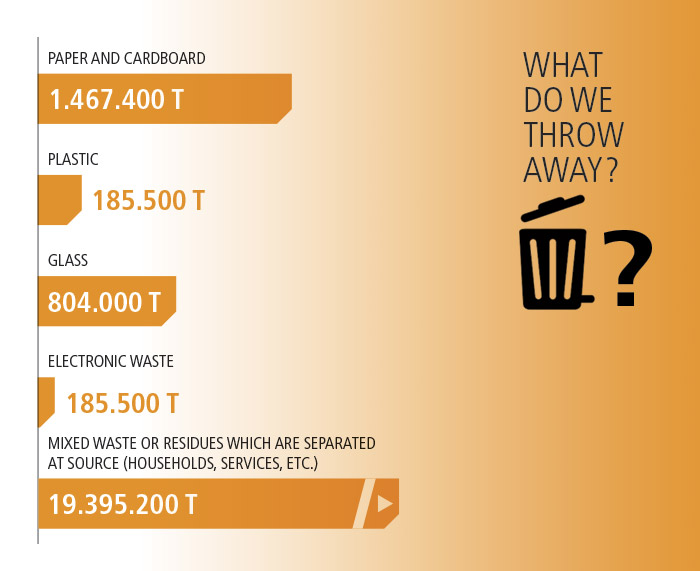Non-organic waste: the most outstanding pupil
We already know that waste can only be the product or result of human activity and that depending on who we are and where we live, we generate one kind of waste or another. One of the most common classifications of waste we found it divided into two major types according to their composition: organic and non-organic.
We will take a look at the non-organic waste. Briefly, all defined as inorganic waste has NO biological origin, on the other side, is industrial in nature or derived from some other artificial process, for example, plastics, synthetic fabrics, etc. The non-organic waste is by definition NOT decompose materials naturally or take a long time to degrade, such as plastic, glass, paper and metals.
Certainly waste that takes less time to degrade are the organic. It may take about 4 weeks to degrade because biodegrade itself quickly through the action of organisms in organic matter and ground. This occurs in an environment that is not mixed with inorganic wastes or chemicals.
Unlike the organic waste, if we review the ‘life expectancy’ of some of the inorganic ‘stars’ of our consumption shopping basket, remember that the consumption basket depends on our lifestyle and our place of residence among other factors, the degrade process is quite different:
- Paper, which is basically composed of cellulose, it could take less than 1 year to be part of the ground.
- Aluminum cans may take about 10 years to transform into iron oxide.
- The tetra-briks, as they are composed of a mixture of cellulose, low density polyethylene and aluminum, are degraded in about 30 years.
- Aluminum is one of the materials that it takes longer to disappear.
- Plastic is a material that is not readily degradable. Take about 150 years to decompose plastic bags. Plastic bottles, most of which are made of polyethylene terephthalate (PET), a difficult material to degrade, take between 100 up to 1,000 years to decompose.
- A final example, the batteries take over 1,000 years to disappear.
Our society has created awareness about waste and all these long years that the earth is able to integrate them back into it, thinking about getting it. Moreover, as we generate environmental awareness, we generated optimal structures and processes to channel and transform these wastes: Specific containers to deposit and separate it, specific treatment processes and large awareness campaigns around, among other contributions.
In fact, if we analyze the origin of waste we throw to containers, we discover that what we generate more is organic waste mixed:
What are we doing with inorganic materials? It seeks to transform them into recyclable or lead to new materials and other applications that are mostly:
Paper and paperboard
Plastic Bottles
Glass Bottles
Aluminum cans
Tetra Pack
Metals
Thus, we find that non-organic waste, that which nature takes longer to reintegrate within their life cycle, probably as a result of that, has better structures and recycling processes, unlike organic material not recycled, whose volume highlights the need to refocus the spotlight alarms about the problem of waste.
There is about the presence of the inorganic waste in our lives a ‘bad’ reputation to the above, for instance, the belief that plastic, just by their nature, are already harmful and dangerous. And indeed they are. But not by nature but by volume, the management or the use made of them. What pollutes more? A 100 grams container or one tonne of organic matter is not recycled?
The work of environmental awareness around the inorganic waste remains important and necessary. Reduce, Recycle and Reuse is important.
What else can we do to improve waste management?


Comments are closed.